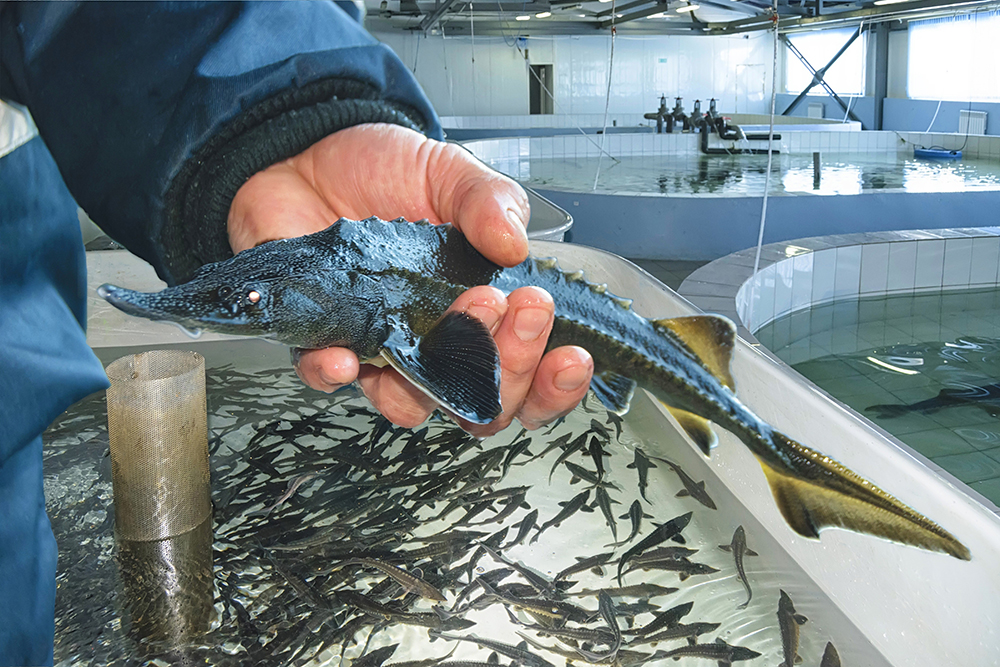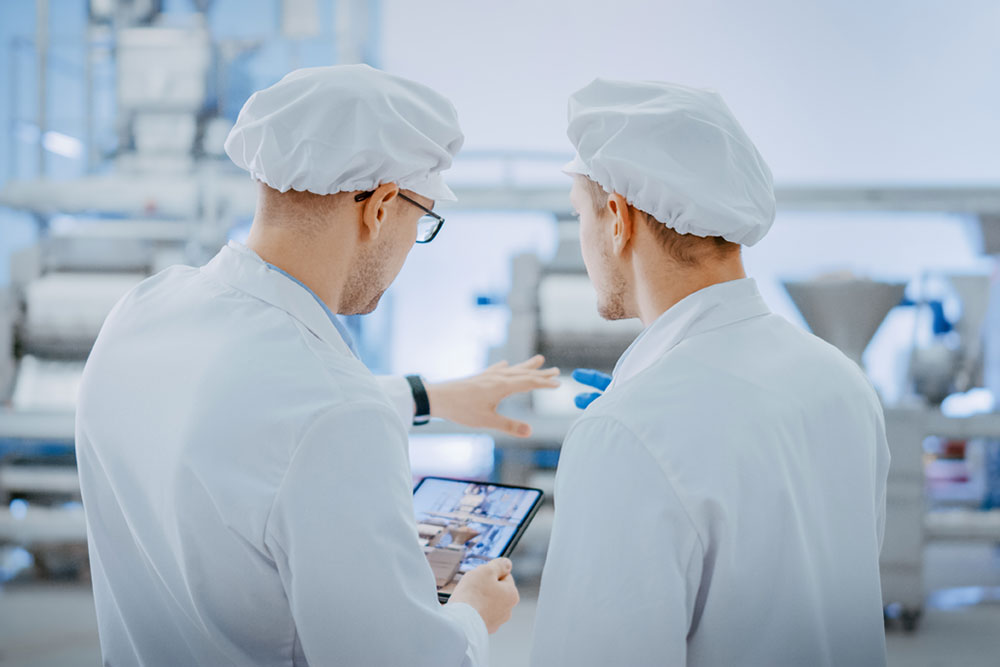Meeting food supply demands isn't easy for the agricultural industry. Farming is time-consuming, and many farms lack the workforce necessary to increase production, and it has led to people looking for creative solutions to the problem.
As a result, companies are finding new ways to use robotic technology to create agricultural robotics to spur agricultural growth. With these robots, farms can increase their food production to meet the growing demands without hiring more people.
WHAT IS AN AGRICULTURAL ROBOT?
An agricultural robot is any robotic device that is capable of improving agricultural processes. They do this by taking over the typically slow and labor-intensive tasks; farming robots make these tasks significantly easier and are completed faster and more effectively. While some farm robots work independently, others work side-by-side with their human counterparts.
BENEFITS OF ROBOTIC FARMING EQUIPMENT
Agricultural robots have helped revolutionize the field of agriculture by increasing yields, decreasing labor costs, and helping to simplify agricultural processes like harvesting. A closer look at the benefits of farming robots includes:
Increased Efficiency
The farming robots can perform tasks more precisely and quickly for greater operational efficiency.
Optimized Labor
With farm robots taking over the more labor-intensive and time-consuming tasks, human labor can get redirected into more skilled and strategic roles, which helps to improve the overall productivity of the workforce.
Resource Optimization
Robots in agriculture allow for more precise control over resources by ensuring that water, fertilizer, and pesticides are used appropriately which creates less waste and minimizes the environmental impact.
Cost Reductions
While the initial investment in robotic farm equipment is high, the long-term benefits include reduced labor costs, less resource waste, and higher yields, which contribute to an overall cost reduction.
Data-Driven Decisions
Robotic farming equipment doesn't just do farming tasks; it also collects data using various sensors and cameras. This allows a robot farmer to analyze this data and make better-informed decisions on crop management, to make proactive changes in response to seasonal conditions.
Environmental Sustainability
Robotic agriculture helps minimize the environmental impact of agriculture by using resources more efficiently, reducing chemical use, and optimizing crop health.
24/7 Operations
Robots can operate day and night which allows farms to operate 24/7.
Improved Crop Quality
Robots' gentler and more careful handling of crops helps to ensure higher quality crops.
Autonomous Navigation
Autonomous robots in agriculture are equipped with navigation systems that can set a route for the robot to follow that eliminates the need for constant human supervision.
Scalability
Robots in agriculture allow for scalable solutions; farms of all sizes can adopt the technology for more efficient farming.
HOW ARE ROBOTS USED IN AGRICULTURE?

There are many applications for robotic farm equipment. Some of these applications include:
Harvesting
Harvesting robots are used to harvest crops like fruits and vegetables. They use sensors and cameras to detect when crops are ready for picking, then use a robotic arm or other method to carefully pick and gather the crop without causing damage.
Weeding
Weeding robots are responsible for removing weeds from the field, using image recognition technology to identify weeds. Special tools remove them so that any nearby crops remain undamaged.
Seeding and Planting
Seeding and planting is a tedious and time-consuming task. Robots dedicated to the task can help automate the process by using GPS and various other technologies to execute the task perfectly.
Fertilizing
Using robots for fertilizing fields has become more common, as traditional fertilizing techniques have been deemed wasteful and can result in uneven distribution. Robots apply fertilizer evenly to the designated area, to reduce waste and ensure that all of the plants get the appropriate nutrients.
6 DIFFERENT AGRICULTURAL ROBOTS
There are many different agriculture robots, each designed for specific tasks. Some of these robots include:
1. Six-Axis Robots
Six-axis robots, or articulated robots, can be used for various tasks. This farm robot has a flexible arm with several joints that allow it to move in various directions and positions. They are also equipped with various sensors, including vision sensors.
The ability to move, paired with the sensors, makes them a great option for robotic harvesting because they can reach into tight spaces and identify produce that is ready for picking without harming the surrounding product.
Despite the ability of the arm to move, Six-Axis robots are otherwise limited in their mobility and require additional equipment to allow for extra mobility.
Agriculture automation companies like Tortuga AgTech create fruit-picking robots that have a 98 percent accuracy rate and only require a single human to supervise their work.
2. Mobile Robots
Another widely used piece of robotic farm equipment is mobile robots. These robots also have many potential applications. They are equipped with wheels or tracks to allow them to navigate through fields and other outdoor environments where they can perform their assigned tasks. Their primary application is crop monitoring; they are equipped with sensors and cameras that can detect the health of plants, soil moisture levels, and other critical variables. Farmers can then use this information to make decisions regarding irrigation, fertilization, and more.
3. Autonomous Tractors
One of the most common autonomous robots in agriculture is tractors. Tractors can handle tasks like planting, fertilizing, and spraying, where farmers need precision and consistency. They can also be used for soil preparation, tilling, and harvesting. The autonomous tractors are equipped with GPS and other mapping technologies that allow them to navigate fields without a human driver.
4. Autonomous Drones
Agricultural robotics companies are also producing drones capable of aerial imagery. These drones use thermal, infrared, and NDVI imaging to provide critical aerial images of the farmland. The images can give farm owners a better sense of the overall health of the fields, identify insect issues, check irrigation layouts, and more. While these drones aren't common, due to strict FAA guidelines, farms that are able to take advantage of the technology put them to use.
Some drones can also scatter seeds over farm fields and disperse fertilizers with precision.
5. Harvest CROO
Harvest CROO is a harvesting robot designed specifically to pick strawberries carefully with gentle grubbing hands. The robot moves through the rows of plants, using a vision system to scan each fruit and determine which ones are ripe and ready for picking.
6. Polly the Pollinating Robot
While bumble bees typically handle plant pollination, sometimes they need help. The regular methods that farmers use are slow and tedious. Polly, another of the many robots in farming, is designed to handle the task of pollinating fruiting plants like cucumber, squash, and tomatoes more quickly and efficiently. It uses AI technology to recognize flowers that are ready for pollination and hits them with a puff of air to release the pollen.
FOODSAFE DRAINS: THE PERFECT COMPANION FOR ROBOTIC FARMING EQUIPMENT
While not specifically a piece of farming robotics, FoodSafe Drains provides something essential to farms: drainage. Unlike traditional systems, FoodSafe Drains are a sleek, modern approach to drainage. These systems offer many benefits:
- They can handle large amounts of water runoff with ease.
- T304 and T316 stainless steel construction ensures a durable, corrosion and temperature-resistant build.
- Heavy-duty Load Class means the system can withstand the weight of robots in farming.
- Compatible with clean-in-place technology for automated cleaning.
While FoodSafe Drains offers many systems, the FoodSafe Trench Drain is ideal for farm operations because it can handle solid waste, like dirt and weeds, more easily without becoming clogged or backed up. There are three variations of the system:
Round Bottom Trench Drain
The Round Bottom Trench Drain features a wide, rounded bottom that makes it good for smooth solids removal. It is also ideal if you want a more sanitary system because the rounded bottom ensures that no bacteria can catch on edges or corners.
Flat Bottom Trench Drain
The best system to choose when dealing with large amounts of water runoff is the FoodSafe Flat Bottom Trench Drain. This option's flat bottom allows wastewater to flow through quickly, and it can handle solids with ease as well. The seamless design ensures there are no bacteria-harboring points, even along the edges of the channel.
V-Bottom Trench Drain
Finally, there is the V-Bottom Trench Drain, where the channel walls form a shallow v-shape. This gives the V-Bottom system the perfect form for both high-volume flow rates and solids removal.
THE FUTURE OF AGRICULTURAL ROBOTS
As the population grows, so does the demand for food. This demand is hard to meet for a human workforce alone. It has led to the growth of agricultural robots and robotic farming equipment, which provides the perfect solution.
These farming robots can handle the more tedious tasks that come with farming by completing them faster and more efficiently and allowing the human workforce to focus on other areas.
While the robots can handle the work, they cannot handle the drainage necessary on farms–for that, you need FoodSafe Drains, which will help ensure that the fields don't flood during rainstorms. It also helps to remove excess water from watering times, to keep crops safe and healthy.
Contact FoodSafe Drains to learn about the benefits of our systems and how they work hand-in-hand with robotic farming technology.


